India introduces T+1 trade settlement
On 27 January 2023, the Securities and Exchange Board of India (SEBI) announced that the Indian equities markets had completed their year-long transition to a T + 1 settlement cycle. From now on, all equities trades made on Indian exchanges (including shares, ETFs, and bonds) must settle within a single day. This is the latest step in a long process towards shorter settlement, and many other markets around the world seem poised to follow India’s lead. Rapid settlement can deliver many benefits, but the transition presents challenges. Regulators, exchanges, and counterparties need to look to both their processes and technologies to ensure that the journey towards T + 1 settlement is as smooth as possible.
Settlement cycles in developed markets
Since the 1970s, improvements in technology and process have steadily reduced the time needed for settlement. By the late 2010s, most exchanges had standardized on a two-day settlement period (T + 2). The next logical step is T + 1, and markets around the world are in the process of transition. India, as we previously mentioned, introduced T + 1 settlement for all equities instruments over the course of the last year. In mainland China, some securities require same-day settlement. And the US Securities and Exchange Commission (SEC) recently announced plans to introduce T + 1 settlement in 2024.
What are the benefits of the T+1 settlement cycle?
The advantages of T+1 settlement (and shorter settlement periods in general) include:
- ‘Capital efficiency’ or increased availability of liquidity. During settlement, funds need to be deposited with a central clearing counterparty to guarantee the trade. Shortening the settlement period means that this capital becomes available again more quickly and can be reinvested into the market. The faster settlement means a greater ‘throughput’ of trades and a potential increase in total trading volumes.
- Reduced risk:
- A shorter settlement period means less volatility risk since there is less time for the market to move during the settlement period.
- Likewise, shorter settlement reduces counterparty risk, since counterparties spend less time exposed to each other.
- Both these factors create a reduction in capital or margin risk, reducing the amount that brokers will need to deposit with clearinghouses during settlement.
More generally, faster settlement can make the equities market a more attractive proposition for investors. Partly this is about cost – reduced risk and increased trading volumes should allow brokers to pass on savings to their customers. But there is also an acknowledgement that equities markets exist in a competitive environment, where investors have an increasing choice of asset classes. Innovations like T + 1 settlement can help the equities markets retain and attract customers. This is a factor in markets like India, with growing numbers of retail investors.
The challenges of next-day settlement for foreign and domestic investors
Shortening the settlement period presents challenges for both markets and participants. Internal processes have to become faster and more efficient to allow for next-day settlement. Automation is key – from trading itself, through to confirmation and reconciliation, manual processes need to be identified and automated wherever possible. The faster settlement also requires different systems to work together effectively. For example, counterparty trading platforms need to interface seamlessly with central clearing systems. The end goal is for true straight through processing (STP) from execution to settlement.
For international investors, the move to T + 1 brings additional challenges. Ahead of India’s transition to next-day settlement, industry figures raised concerns about both operational and business issues. From an operational perspective, having to complete settlement within a single working day puts pressure on back-office processes. This can be particularly acute if teams are working across multiple time zones. Having to manage different settlement cycles for different markets can also create organizational complexity and additional overheads.
A shorter settlement may cause friction in the securities lending market – borrowers will need to take into account the fact that they will have less time to source stocks if they receive a recall request.
The fact that T + 1 markets are currently out of sync with most other settlement cycles also presents issues:
- International investors often use the global money markets to arrange FX funding for equities trading. Most of these markets have a T + 2 or T + 3 settlement cycle, which may complicate this workflow for trades in the Indian market.
- Indian GDRs and ADRs trade on European and North American equities markets. Depository banks need to ensure that their processes can cope with the fact that trades in the underlying stocks must be settled in half the time of trades in depository receipt instruments.
Of course, such problems should not prove insurmountable. In most cases, streamlining and automating internal workflows will go a long way to addressing them. And as more markets standardize around T + 1 settlement, many of these challenges will become moot. But this does illustrate some of the factors that international investors need to bear in mind when operating in different settlement regimes.
How should exchanges implement T+1 settlement?
For regulators and exchanges, the transition process needs to be carefully managed. In India, SEBI took a gradual approach. Securities transitioned to T + 1 settlement in batches, starting in February 2022 and concluding in January 2023. This phased rollout-allowed market participants time to adjust their systems and processes and allowed issues to be identified and fixed without affecting the entire market. There is an argument that this approach adds unnecessary complexity, by forcing participants to maintain different processes depending on what instrument they are trading. A single ‘big bang’ transition date has the benefit of simplicity – but presents its risks. No doubt the SEC is carefully monitoring the experience of Indian markets before its move to T + 1.
Conclusion
In the move to T + 1, high-growth markets like India have led the way. Now regulators, exchanges, and investors worldwide need to look at their systems and processes to make sure they are ready for next-day settlement.
Find out more
Contact ION Markets today to find out how we can help you address the unique challenges of global equities trading.


